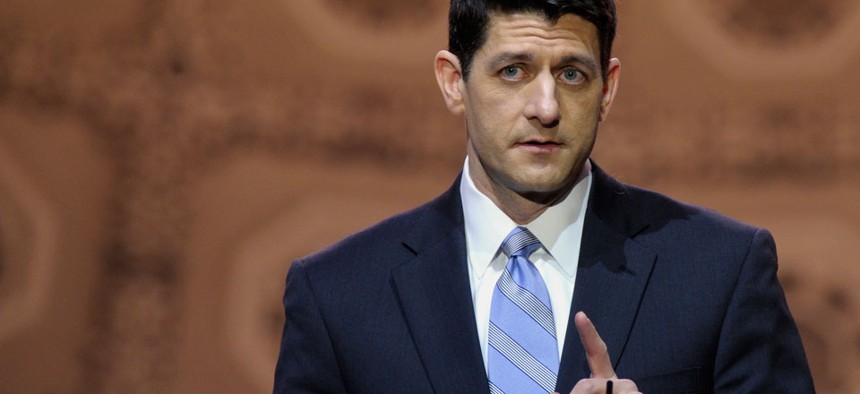
House Budget Committee Chairman Rep. Paul Ryan, R-Wis. Susan Walsh/AP
CBO Explains Why It Can’t Analyze the Ryan Budget the Way Republicans Want
Agency lacks the staff and tools to comply with request.
The nonpartisan Congressional Budget Office says it lacks the person-power and economic models to perform its analysis of the pending House Republican budget using the approach requested by Budget Committee Chairman Paul Ryan, R-Wis.
In an April 3 letter to Ryan, CBO Director Douglas Elmendorf laid out several reasons why his agency could not meet Ryan’s request that the budget blueprint that cleared the Budget Committee last week be scored according to the “long-term, macroeconomic analysis” called for in the Pro-Growth Budgeting Act.
The budgeting act bill, introduced by budget panel vice chairman Rep. Tom Price, R-Ga., passed the full House on Friday. It would require CBO to broaden its set of tools in analyzing bills with expected budgetary effects greater than 0.25 percent of the currently projected U.S. GDP.
“For a number of reasons, CBO would not be able to perform the analyses envisioned by that set of amendments,” Elmendorf wrote. “We do not have the analytical capabilities or the level of staffing that would be needed to undertake and complete the tasks that would be assigned to us, nor would the usual timetable for considering legislation allow the time that would be required to complete such analyses, even if we did not face those analytical and staffing constraints.”
The director continued, “In some cases, we are not aware of the existence of the data or models that would be required to undertake such analyses. Moreover, building the necessary analytic capacity and applying it under the circumstances envisioned in the set of amendments would require significantly more staff than CBO currently has.”
CBO did offer to discuss the possibility of special analysis of certain issues raised by the Price bill, which is not expected to pass the Democratic-controlled Senate. Republicans who embrace supply-side economics for decades have promoted so-called dynamic scoring as a way to factor in what they view as the stimulating impact of tax cuts in boosting economic growth.
NEXT STORY: The Reality of How We Focus







